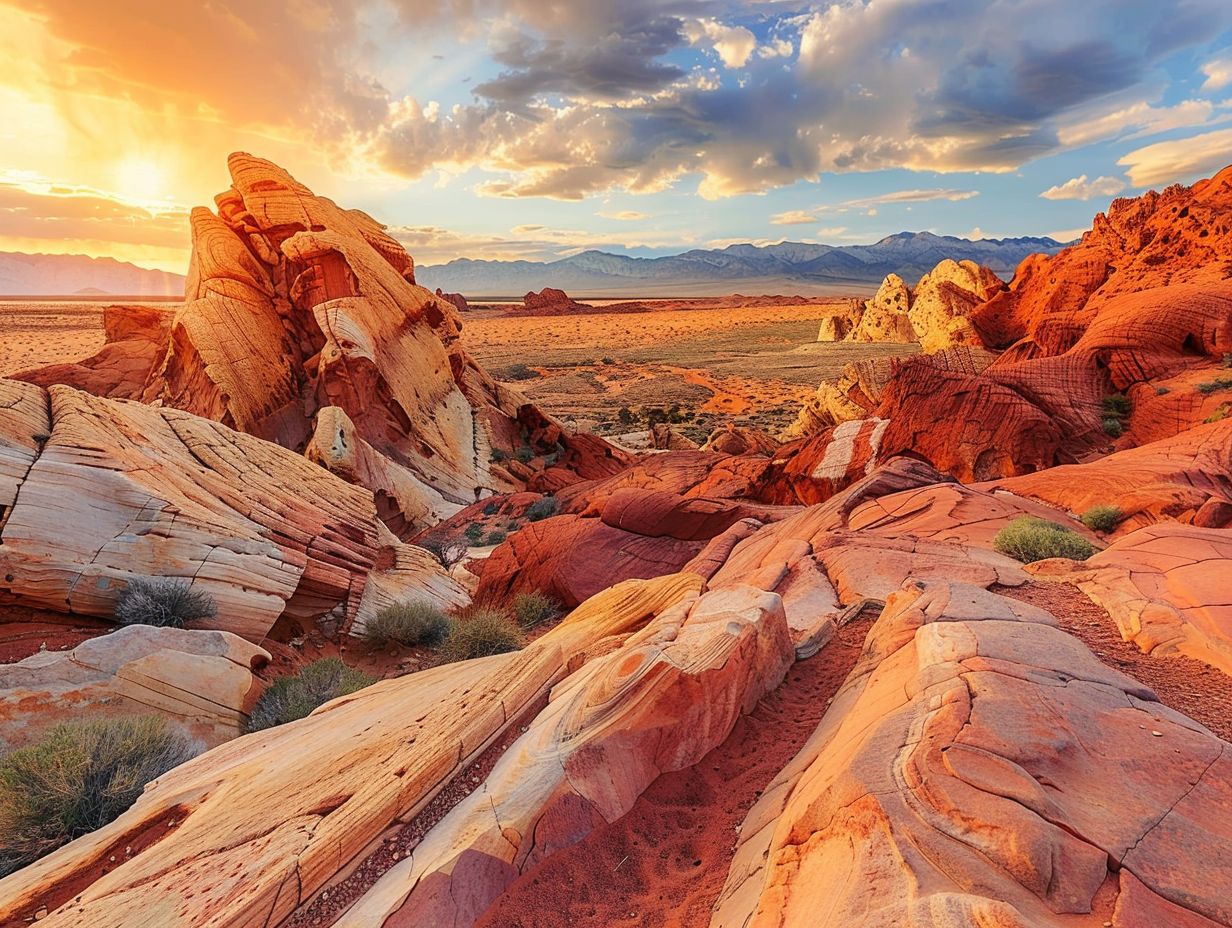Valley of Fire State Park is a natural wonder located in the Mojave Desert of Nevada, known for its striking red sandstone formations and diverse array of wildlife. As a State Park Touring Enthusiast, I’m excited to share my insights on the fascinating animals that call this unique ecosystem home.
The Iconic Residents of Valley of Fire State Park
The park is home to a wide variety of wildlife, with many species adapted to the harsh desert environment. Some of the most iconic residents include:
-
Desert Tortoise (Gopherus agassizii): This rare and protected species is a true symbol of the Mojave Desert. These slow-moving reptiles can live up to 80 years and play a crucial role in the ecosystem.
-
Bighorn Sheep (Ovis canadensis): The desert bighorn sheep, with their impressive curved horns, are a sight to behold as they navigate the rugged terrain. These agile climbers are well-suited to the park’s steep canyons and rocky outcrops.
-
Coyote (Canis latrans): The coyote is a common and adaptable predator in the park, known for its distinctive howls and cunning hunting strategies. These opportunistic omnivores play a vital role in the desert food web.
-
Roadrunner (Geococcyx californianus): The iconic roadrunner, with its distinctive crest and long tail, is a beloved resident of the park. These fast-moving birds are known for their ability to outrun predators and their unique hunting behaviors.
Nocturnal Wonders of Valley of Fire State Park

While many of the park’s animals are active during the day, there is a fascinating array of nocturnal species that come alive under the cover of darkness. These include:
-
Kit Fox (Vulpes macrotis): These small, agile foxes are well-adapted to the desert environment, using their large ears and keen senses to hunt small prey at night.
-
Spotted Skunk (Spilogale gracilis): These elusive, striped creatures are known for their distinctive defensive posture and ability to spray a foul-smelling musk when threatened.
-
Desert Kangaroo Rat (Dipodomys deserti): These small, hopping rodents are masters of survival in the desert, able to go their entire lives without drinking water and relying on the moisture in their food.
Avian Wonders of Valley of Fire State Park
The park is also home to a diverse array of bird species, both resident and migratory. Some of the notable feathered residents include:
-
Raven (Corvus corax): These intelligent and adaptable birds are a common sight in the park, known for their distinctive calls and scavenging behaviors.
-
Gambel’s Quail (Callipepla gambelii): These plump, ground-dwelling birds are a delight to spot, with their distinctive head plumes and social behavior.
-
Costa’s Hummingbird (Calypte costae): These tiny, iridescent hummingbirds are a true marvel, hovering effortlessly and feeding on the nectar of desert flowers.
Reptilian Residents of Valley of Fire State Park
The park’s diverse reptile population includes a variety of lizards, snakes, and the iconic desert tortoise. Some of the notable reptilian residents are:
-
Chuckwalla (Sauromalus ater): These large, stocky lizards are known for their ability to wedge themselves into rock crevices to avoid predators.
-
Gila Monster (Heloderma suspectum): This venomous lizard is one of the few venomous reptiles found in the park, and is a fascinating and unique creature.
-
Speckled Rattlesnake (Crotalus mitchellii): These desert-adapted rattlesnakes are an important part of the park’s ecosystem, though visitors should exercise caution and respect their presence.
Smaller Denizens of Valley of Fire State Park
In addition to the larger, more charismatic species, the park is home to a variety of smaller mammals, rodents, and insects that play crucial roles in the desert ecosystem. These include:
-
Black-tailed Jackrabbit (Lepus californicus): These large hares are a common sight, known for their impressive speed and ability to evade predators.
-
Antelope Ground Squirrel (Ammospermophilus leucurus): These small, striped squirrels are active during the day, foraging for seeds and insects.
-
Desert Woodrat (Neotoma lepida): Also known as the “pack rat,” these rodents are known for their habit of collecting and storing various objects in their nests.
Protecting the Park’s Delicate Ecosystem
The diverse wildlife of Valley of Fire State Park is a testament to the resilience and adaptability of desert species. However, these animals and their habitats face a variety of threats, including climate change, habitat loss, and human disturbance.
As State Park Touring Enthusiasts, it’s important that we do our part to protect and preserve this unique ecosystem. This includes following park regulations, staying on designated trails, and respecting the wildlife by observing from a distance and never feeding the animals.
By learning about and appreciating the incredible diversity of Valley of Fire State Park’s wildlife, we can become better stewards of this natural wonder and ensure that future generations can enjoy its wonders.

